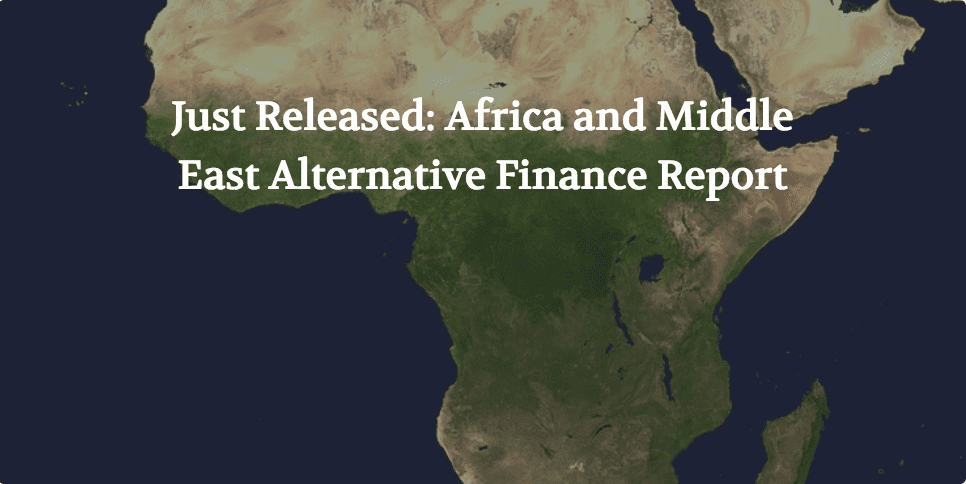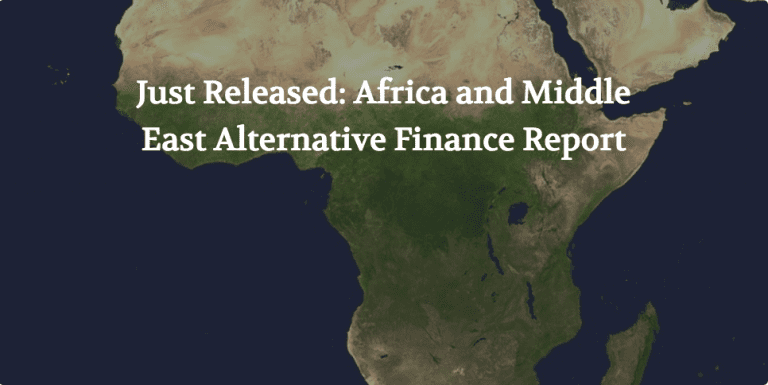
We often hear news about alternative finance in a few main geographies: the the UK and Continental Europe, the US and China. While there is a lot happening in the larger markets, alternative finance is a global trend and it’s important to realize that there is innovation happening all over the world. I would argue that there is much more potential for impact in some of the emerging markets. The best known research done in the alternative finance space is the Cambridge Centre for Alternative Finance (CCAF) and they recently released their first study on Africa and the Middle East.
It was a collaboration between CCAF, Energy 4 Impact with other support from UKAid and CME Group Foundation. These reports aim to present the size and growth of both crowdfunding and peer to peer lending in the associated regions. The new study also includes information on alternative payment systems including mobile payments and cryptocurrencies. It covers 46 countries in Africa and 12 in the Middle East, featuring 70 alternative platforms with data from 2013 through 2015.
The full report is available for download on the University of Cambridge website. I have summarized below a few interesting takeaways from their summary of the report but if you’re interested in understanding these markets better, the report is worth reading.
- The alternative finance space is relatively small in these regions. A total of $242m in online alternative finance funds was raised across both Africa and the Middle East in 2015, of which Africa registered $83.2m and the Middle East $158.8m.
- Peer to peer lending makes up a small percentage of alternative finance in these regions. Business lending accounted for only 17% of the total market volume in Africa. Consumer lending accounted for only 6% of the total market in the Middle East.
- Equity crowdfunding represented 67% of the total market volume in the Middle East. Microfinance represents 42% of the total volume in Africa with donation-based crowdfunding accounting for 17% market share.
- Platforms outside of Africa are responsible for the majority of alternative finance. In the Middle East a majority of originations come from platforms within the region.
- Growth has slowed from 2014-2015 compared to the 2013-2014 period.
- Israel is the market leader in the Middle East while Kenya and South Africa are the leaders in Africa.
- Little regulation exists which is hampering growth in the regions and there is a perceived risk of fraud.


